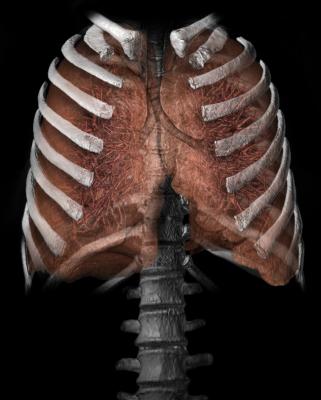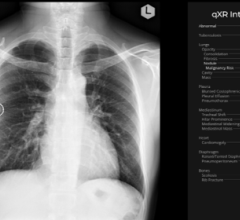
November 12, 2014 — Patients at high-risk for developing lung cancer are more likely to receive low-dose computed tomography (LDCT) screening when their primary care provider is familiar with guideline recommendations for LDCT screening for lung cancer, according to research presented at the 2014 Chicago Multidisciplinary Symposium in Thoracic Oncology. The symposium is sponsored by the American Society of Clinical Oncology (ASCO), the American Society for Radiation Oncology (ASTRO), the International Association for the Study of Lung Cancer (IASLC) and The University of Chicago Medicine.
Lung cancer is the second most commonly occurring cancer and the leading cause of cancer-related death for both men and women in the United States. The use of LDCT screening for high-risk individuals has been recommended by several national healthcare organizations including the American Lung Association, the American College of Chest Physicians and the U.S. Preventive Services Task Force (USPSTF). High-risk patients, according to the December 2013 “Screening for Lung Cancer: U.S. Preventive Services Task Force Recommendation Statement,” include adults ages 55 to 80 who have a 30 pack-year smoking history and who currently smoke or have quit within the past 15 years. Research has demonstrated that LDCT screening can lead to earlier diagnosis of lung cancer, thereby reducing lung cancer-specific mortality by 16 percent and increasing overall survival.
An online survey was sent to 488 primary care providers, including physicians, physician assistants and nurse practitioners, affiliated with the Wake Forest Baptist Medical Center in North Carolina, to identify their knowledge of, practice of and attitudes about lung cancer screening. The survey measured the provider’s use of lung cancer screening tests in the past year; the perceived effectiveness of LDCT screening in reducing lung cancer-specific mortality; knowledge of LDCT consensus guidelines; perceived barriers to LDCT screening; and interest in further education about LDCT screening for lung cancer.
Sixty percent (293) of the primary care providers responded. Of those respondents, 212 primary care providers cared for patients older than age 40 in the past year and were eligible for the study. Twenty-one percent (45) of respondents ordered a chest X-ray for lung cancer screening, and 12 percent (25) recommended LDCT for lung cancer screening, with an additional 3 percent (6) ordering sputum cytology (analysis of mucus from the lungs and airways).
The survey results showed that 48 percent (102) of respondents knew three or more of the six guideline components for LDCT screening, including who to screen, the recommended screening intervals and when to start or stop screening. Twenty-four percent (51) of providers that responded did not know any of the guideline components. Logistic regression analysis determined if providers’ knowledge of national guidelines influenced LDCT utilization. Providers who knew three or more of the guideline components were more likely to order LDCT screening for individuals at high-risk for developing lung cancer (Odds Ratio 5.0, 95 percent 1.9-12.9). Eighty percent (170) of the primary care providers responded that they were interested in more education about lung cancer screening.
Of the eligible respondents, 30 percent (64) were unsure of the effectiveness of LDCT in reducing cancer mortality, and none of these providers recommended LDCT for lung cancer screening for their patients.
The most commonly perceived barriers to LDCT screening according to survey respondents were patient cost (87 percent, n=184); potential harm from false positive findings (83 percent, n=176); patients’ lack of awareness (81 percent, n=172); potential harm from incidental findings (81 percent, n=172); and no insurance coverage (80 percent, n=170).
“The results of this survey highlight an essential need for provider education on the effectiveness of low-dose CT screening for lung cancer, on lung cancer screening guideline recommendations and the potential benefits and harms of screening,” said Jennifer Lewis, M.D., lead study author and an assistant chief of medicine in the department of internal medicine at Wake Forest Baptist in Winston-Salem, North Carolina. “It is also important to provide additional education for patients so that they can participate with their primary care provider in making informed decisions about lung cancer screening.”
For more information: www.astro.org


 December 10, 2025
December 10, 2025 









